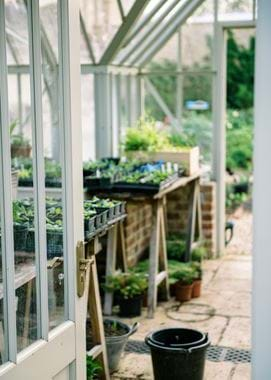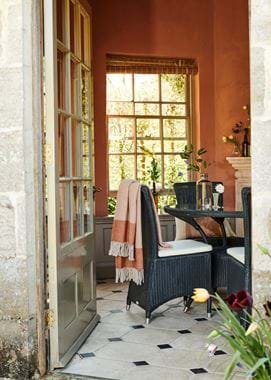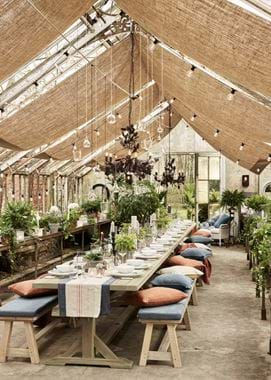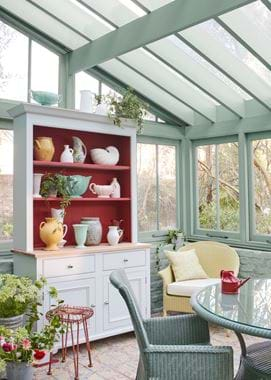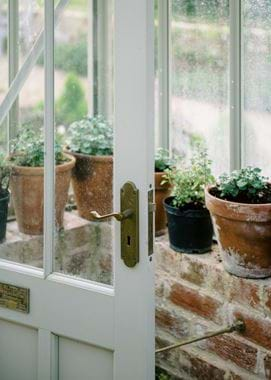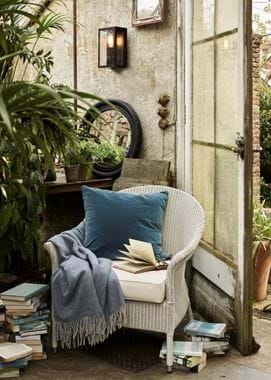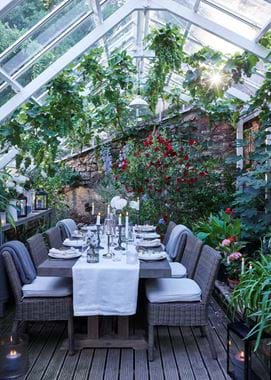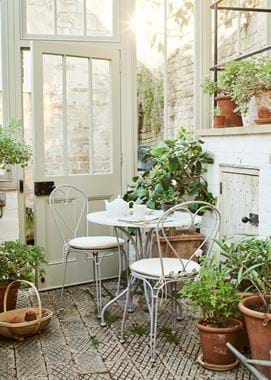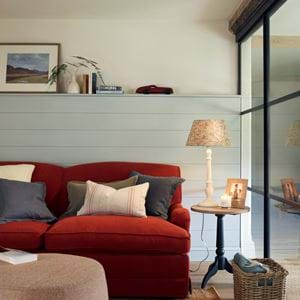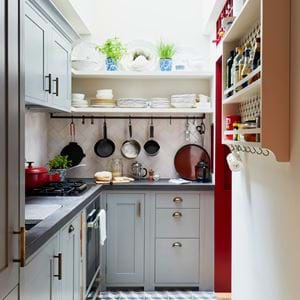Greenhouses, orangeries and conservatories, a short history
Greenhouses, orangeries and conservatories, a short history
What is the difference between an orangery, a greenhouse and a conservatory? Like many ‘back of house’ spaces (utility rooms, laundries and sculleries), the terms have become mixed and muddled over the years. But, a little dig into their history reveals a collection of garden buildings uniquely designed for their individual purposes.
Orangeries
Built with much less in the way of glass, orangeries were (unsurprisingly, given how expensive glass once was) among the first garden buildings people set about creating. Even though greenhouse-like structures had been around since the Romans (who used translucent cloth or even sheets of the crystal Selenite to create the windows of theirs), it was in the seventeenth century, when oranges were first imported into Britain and they kicked off a craze amongst the well-to-do for growing their own, that orangeries really took off.
Less picky than some of the plants that came later, citrus fruits need only a relative amount of heat and light to thrive. So orangeries, with their tall, south-facing windows and protected north sides but otherwise brick-built structures, did just fine for overwintering the trees and other tender plants. And, as pots and planters moved outside in the summer, these buildings also happened to make a great place for a get-together – a halfway point between indoors and out.
Today, orangeries have all sorts of purposes beyond the cultivation of citrus fruit. With less glass and more in the way of walls and columns, they’re particularly ideal for kitchens and built-in cabinetry (although perhaps not in a south-facing aspect), and can incorporate fireplaces that make them more comfortable to use in winter. Be sure to maintain some of the aesthetics of an orangery though, so you don’t lose that garden connection that makes this type of addition to your home special. Stone or terracotta flooring, aged finishes, and light window treatments (so as not to block architectural details) will all contribute to the more relaxed feel these spaces should have. As for plants, reference history with citrus trees in impressive terracotta, timber, or lead-style pots.
Greenhouses & glasshouses
Whatever you call it, the glass-walled, glass-roofed garden building made a real appearance in Britain in the late seventeenth century. Among the first were three glass cases with timber frames erected at Hampton Court Palace in 1689 to hold the exotic plant collection of King William and Queen Mary.
It was in the nineteenth century though, when improved engineering and the fall in the price of glass made their creation much easier, that the greenhouse really became the on-trend thing to have. Curving roofs, made possible by the development of cast iron frames, were just one of the innovations dreamt up in order to better grow tropical and subtropical specimens, while, as plant collecting ambitions grew ever larger, so did the greenhouses themselves. The use of greenhouses to grow not only edible plants but ornamental ones too, meant that they crept closer to the house and, no longer confined to the walled kitchen garden, became more elaborately decorative in style as well. Heating systems were elaborate too: Joseph Paxton’s Great Conservatory at Chatsworth House in Derbyshire was heated by steam carried through pipes powered by eight boilers which, in turn, were fed by a steady stream of coal coming in on underground rail wagons (inside this huge greenhouse there was even a central thoroughfare large enough for a horse and carriage to travel down).
Gradually, as manufacturing techniques, materials and costs improved, so did the possibility of glasshouses for homes other than the grand estates. A whole host of makers sprung up to meet the demand from middle-class households, and greenhouse designs were available for every sort of plant, from shade-loving ferns to peach houses and vineries.
In modern homes, a greenhouse is generally distinct from other garden rooms such as orangeries and conservatories as being purely for growing plants in. As beautifully built as they can often be, we rarely make use of them for anything else. But, being positioned away from the house and filled with plants can give your greenhouse a magical atmosphere. Make the most of this by simply placing an armchair (a Lloyd Loom style like Chatto would be perfect) in the corner to you can read in tomato-fragranced seclusion. Or set up a temporary table for a supper lit by candlelight under the stars. Never mind if there’s a potting bench in the corner – it’s part of the charm.
Conservatories
The word ‘conservatory’ was first used by the writer and gardener John Evelyn in 1664, although his definition is simply just a building that ‘conserves’ the plants inside, and he (as well as most other people in the seventeenth and eighteenth centuries) used it interchangeably with ‘greenhouse’.
By the late 1700s, many more people desired a closer relationship with the landscape, resulting in larger windows, French doors and flower gardens close to the house. Then, in the early nineteenth century, when it became common to have the main reception rooms of a house on the ground floor rather than the first, the conservatory as we know it today was born.
The advice surrounding the placement of conservatories in houses was notably modern too, and most designers suggested that it live alongside the library, drawing room or breakfast room. John Loudon, a garden designer in the early nineteenth century, recommended that, ‘if it communicates by spacious glass doors, and the parlour is judiciously furnished with mirrors, and bulbous flowers in water-glasses, the effect will be greatly heightened’. A statement that, save for the phrasing, wouldn’t be out of place in an interiors book or magazine today.
Aside from taking a leaf out of Loudon’s book when decorating your conservatory, one of our favourite ideas is to paint the woodwork and any walls in a shade of green or green-blue. Doing so creates continuity between the architecture inside the conservatory and the view beyond the windows, blurring the boundaries. We also like to mix indoor and outdoor furniture here – materials like all-weather wicker, Lloyd Loom, metal and stone are important for making the garden connection, while there’s no reason you can’t make use of pieces like dressers for storage or textiles for comfort, colour and pattern.

